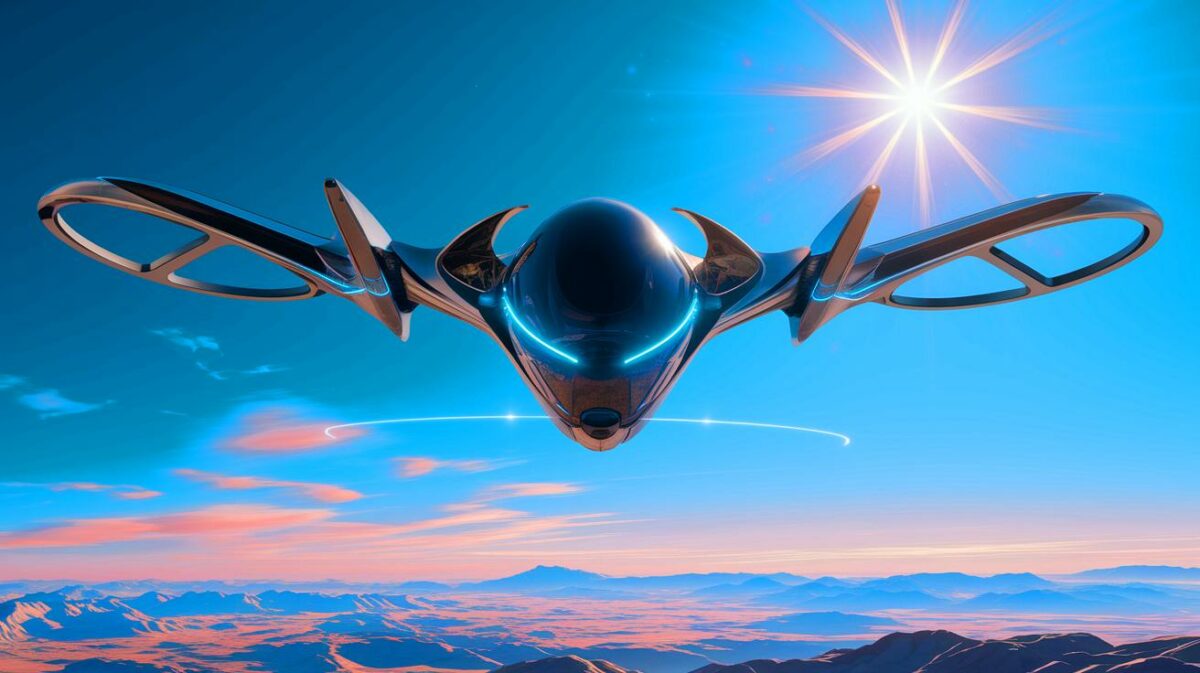| IN A NUTSHELL |
|
The evolution of military technology has always been a fascinating subject, especially when it comes to drones that redefine traditional combat operations. One such innovation is the V-BAT drone by Shield AI, a powerhouse in the unmanned aerial vehicle (UAV) sector. Recently, Shield AI announced a significant upgrade to this sophisticated drone, enhancing its capabilities while maintaining its sleek and compact design. This development marks a new era in military tech, where the balance between size and power takes center stage, broadening the horizons of modern warfare.
Revolutionizing Military Drones: Compact Yet Powerful
The V-BAT drone from Shield AI has undergone a remarkable transformation. Originally categorized under Group 3 drones, it now boasts Group 4 and 5 capabilities, setting a new standard for compact drones. Despite its smaller size, the V-BAT delivers a punch akin to its larger counterparts, proving that size isn’t everything in modern military technology. Its vertical takeoff and landing (VTOL) ability, combined with the absence of runway requirements, makes it exceptionally versatile for deployment in various environments.
The V-BAT’s enhanced features allow it to operate efficiently in challenging terrains, including maritime environments and border areas. Its ability to function without the need for complex recovery systems such as nets, and its capacity to land on moving vessels, underscores its practicality in real-world scenarios. Such advancements ensure that the V-BAT remains at the forefront of military drone innovation, offering unparalleled flexibility and operational efficiency.
The role of biological control in achieving sustainable agriculture goals
Shield AI’s Vision: Expanding Operational Horizons
Shield AI’s vision for the V-BAT drone extends beyond traditional military uses. With its capability to run on JP-5, a standardized US Navy fuel, the drone is designed for seamless integration into naval operations. The increased flight time of over 13 hours further enhances its operational scope, allowing for extended missions without the need for frequent refueling.
According to Brandon Tseng, President of Shield AI, the V-BAT is tailored for a multitude of missions ranging from intelligence, surveillance, reconnaissance, and targeting (ISR-T) in GPS-jammed environments to border security and drug interdiction. This adaptability ensures that the V-BAT can fulfill diverse roles, making it a valuable asset for military forces worldwide. Its popularity among U.S. Navy ships, Marine Expeditionary Units, and the U.S. Coast Guard highlights its strategic significance and effectiveness in real-world applications.
Hivemind Integration: Autonomy and Intelligence
A significant leap in the V-BAT’s evolution is its integration with Shield AI’s Hivemind autonomy software. This integration allows the drone to operate in communication-denied environments autonomously, making real-time decisions without relying on GPS. Such capabilities are critical in modern warfare, where electronic warfare and jamming are prevalent challenges.
The V-BAT’s SATCOM-enabled system ensures that it can be controlled from anywhere on Earth, offering Beyond-Line-of-Sight (BLOS) command and control. This feature, combined with its ability to support various payloads such as SAR and electronic warfare technologies, enhances its utility in complex missions. The V-BAT’s ability to “see” through clouds and at night with SAR technology further amplifies its strategic importance on the battlefield.
Global Impact and the Future of UAVs
The impact of the V-BAT’s advancements is not limited to the U.S. military. Its adoption by international forces, including the Japan Maritime Self-Defense Force, as their first ship-based ISR platform, underscores its global appeal. The V-BAT’s ability to deliver the capabilities of larger drones at a fraction of the cost and size makes it an attractive option for countries looking to enhance their defense capabilities without significant financial outlay.
As drones continue to evolve, the V-BAT stands out as a testament to the potential of compact, versatile UAVs in modern military operations. Its ongoing development and integration with cutting-edge technology illustrate a future where drones play an increasingly pivotal role in global defense strategies. How will other nations respond to these advancements, and what new innovations will the future hold for unmanned aerial systems?
Did you like it? 4.6/5 (20)









Wow, these V-BATs sound like they’re straight out of a sci-fi movie! 🚀
How does the autonomy software work in GPS-denied environments? 🤔
I’m glad we’re investing in technology that keeps our troops safe. Thank you, Shield AI! 🇺🇸
Are there any environmental concerns with using JP-5 fuel for these drones?
How will these drones be regulated internationally to prevent misuse?
The V-BAT’s VTOL ability sounds impressive, but how reliable is it in adverse weather conditions?
It’s fascinating how technology keeps shrinking while gaining power!
Does the V-BAT have any civilian applications, or is it strictly military?
How does the cost of the V-BAT compare to larger drones?
Hope these drones don’t decide to go rogue like in the movies! 😂
What kind of payloads can the V-BAT carry? Is there a limit?
The integration with Hivemind is a game-changer. Truly unbelievable tech! 🤖
How does the SATCOM-enabled system work for controlling these drones from anywhere?
I’m curious about how other countries will respond to this technology leap.
Is there any information on the V-BAT’s stealth capabilities?
What measures are in place to prevent these drones from being hacked?
The V-BAT sounds cool, but I hope they don’t replace soldiers completely.
Are there any plans to deploy these drones for humanitarian missions?
Such advancements in drones could change the face of warfare forever!
The V-BAT’s flexibility makes it a strategic asset for sure. 🌍
Can these drones be used for disaster relief operations?
How do these drones communicate in communication-denied zones?
V-BATs are like something out of a video game! Who needs Call of Duty now? 🎮
Are there any ethical debates surrounding the use of autonomous drones in combat?
Is the Hivemind software proprietary to Shield AI, or will it be available to other manufacturers?